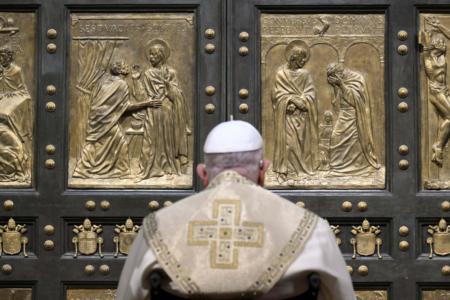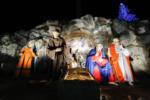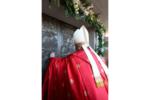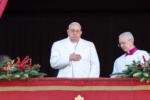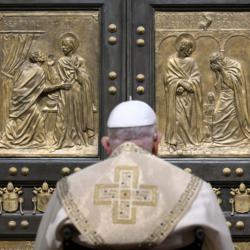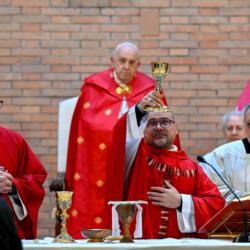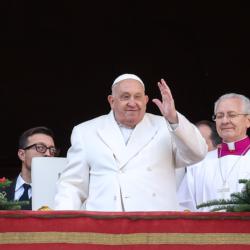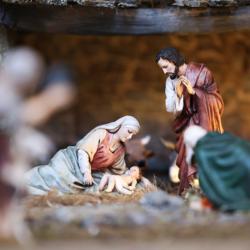A Catholic faith-inspired history curriculum comes to Lawrence Catholic Academy
As dioceses, bishops, and superintendents across the United States call for strengthening Catholic identity in Catholic schools, Catholic Textbook Project has emerged as a leader in offering curricula infused with Catholic faith. The principal of Lawrence Catholic Academy, Monica Lucey, and its history faculty have begun using the curricula and materials of the Catholic Textbook Project (CTP) for grades five through eight students. This change has transformed students' learning experience and skills in concrete ways.
Briefly, the Catholic Textbook Project grades five to six textbook, "From Sea to Shining Sea: The Story of America," covers the Native American nations, European colonization, and the founding and history of the United States up to the 20th century. "All Ye Lands: Origins of World Cultures," geared towards grades six and seven, addresses world history and culture from prehistory through the Greeks, the rise of Christianity, and developments in China, Japan, Russia, Europe, Africa, and the Americas up to the mid 1800s. The grades seven and eight textbook, "The American Venture," covers history from the first settlements in the US through the mid-20th century, and weaves the story of the Catholic Church in America with historical treatments of European, non-European, and Native American cultures in what is now the US, with in-depth discussions of the U.S. and state constitutions.
By all accounts, LCA students are drawn into the "story form" through which the Catholic Textbook Project presents United States and world history. Mary Fullerton, a seven-year veteran LCA teacher and College of the Holy Cross alumna, points out that, in covering Mexican history, the textbook details both the personal experiences of Aztec families "living every day in fear of the prospect that their daughters may be sacrificed to the gods," and of leaders such as the first Catholic saint indigenous to the Americas, Juan Diego.
In presenting the history of Africa and the emergence of Christianity there, the CTP includes coverage of Algerian-born St. Augustine. "My students really appreciate learning about St. Augustine's African heritage," Ms. Fullerton remarks with a smile, "and yet he rarely is presented in the typical middle school world history textbook section on Africa." She credits the CTP with instead choosing to present this influential holy figure in the context of continental history.
Edward Ouano, an Assumption College alumnus now in his second year of teaching at LCA, admires how the textbooks do not only cover the basics of geography, but also illustrate through uniquely focused, well-written text and images the historic and abiding influence of geographic features. Pragmatic discussions of how rivers and mountain barriers have influenced the spread of cultures are eye-opening to students.
Richly lavish illustrations foster analytical and discernment skills essential to students' understanding of history and preparation for future civic engagement. Ms. Fullerton invites her students to compare a range of portrayals of Mary or another sacred figure, or of a political leader such as George Washington; she instructs them to ask themselves why they think the artists have made choices in personal expression, clothing, physical setting, and historic context, and how the period and region in which the artists lived may have affected their choices and aims. Mr. Ouano, who is accomplished in martial arts, invites his students to compare how and why Samurai and European medieval armor reflect family heritages and individual attributes, and analyze other aspects of fascinating side bars CTP textbooks offer.
Like Ms. Fullerton, Mr. Ouano has observed that students find inspiration in CTP's individual- and geographic-focused storytelling. Examples he cites include stories on the positive evolution of the governing style of Chandra Gupta of India, who "is often simplistically portrayed as a hero from his earliest days yet had to learn, and did learn, how to take personal responsibility for the effects of his leadership decisions on the people and worked hard to change. Students can learn from this experience."
LCA students, indeed, take such lessons to heart. Eighth grader Patrick Segura favors how the new textbook explains how "the people, not just the king or other leader, are involved in the story." When asked to spell out why this is important, he thoughtfully reflects. "By focusing on the people as well as the leader, this can show the importance of leadership decisions on the people. It can also show how a wrong decision, for example, can make something go horribly wrong and affect a lot of people. It also shows how people can act, and how that inspiration to take action can be a good thing or a bad thing."
CTP materials prompt in-depth discussion of the how's and why's of societal and cultural elements and connects them. Mr. Ouano cites the case of the armor and, as another example, reasons why women in different regions of ancient India wore distinct styles of clothing and assumed influential roles. He believes his students deeply appreciate that their new history textbook "treats them as eighth graders, not as kids."
Patrick Segura and fellow eighth grader Delilah Montanez -- both confident, serious students -- readily agree. To Patrick, "This new series is tougher and more advanced, but we were ready for this." Delilah nods pensively and adds, "I love how the new textbooks present both the positive and negative sides of an issue. These books offer far more in-depth descriptions than our old textbooks did."
When asked to point out a surprising example of descriptions, Patrick quickly points to those of slavery in the North and South before the Civil War. "Instead of just describing enslaved peoples in general," Patrick explains, "our new textbook compares slavery in the North with slavery in the South. It describes those working far apart from one another in the fields of the South, and those working side by side in Northern factories, which makes you think about and compare the important differences that made in their lives."
Until Principal Lucey decided to introduce the new Catholic faith-infused history curriculum, religion and faith had been discussed primarily in religion and English language arts classes. To be sure, the decision to use Catholic Textbook Project textbooks is enriching Catholic education at LCA. After all, through discussions of religion, Patrick notes, "we grow a lot through God and in faith."
Marlene R. O'Brien served on the Lawrence Catholic Academy capital campaign committee. She is a lawyer and writer, and can be reached at marleneobrien99@gmail.com.
